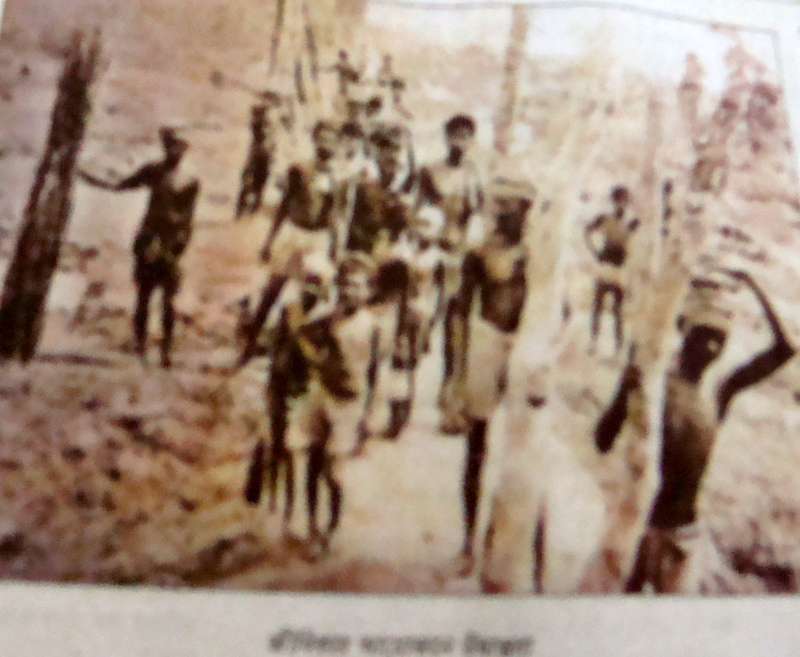In this series, we have discussed four riots( Part I, Part II, Part III, Part IV and pogroms which though resulted in several casualties remained insignificant in the political discourse of our Nation. We have made a bold attempt to speak what has not been spoken for several decades due to lack of political incentives and somehow make the majority community which has more often than not turned a deaf ear towards the excess committed against it and the conspiracies hatched against it. In most of these cases, the States passively supported such riots by allowing the law and order machinery to be hijacked by the communal and fundamentalist forces and not showing any zeal or sense of urgency to bring the incident to a closure but in this article we move towards the state of West Bengal once again and revisit another blot on the face of the secularism of the Nation, the Marichjhapi Massacre which is eccentric in the sense that the State was not just a catalyst but in fact the instigator and the prime culprit.
The Marichjhapi Massacre: Background
Post, the partition of India and Pakistan the western frontier (Punjab) and Bengal showed two different patterns while there was sudden migration across the border in Punjab in one big rush; the migration of refugees in Bengal was spread out over a long period of time given that communal passions flared up in Bangladesh in late 1949 rather than 1947 forcing Hindus to suddenly move across the border towards what was then Calcutta. Moreover, the migration in West Bengal was not two way unlike Punjab and the Hindu refugees flooding onto this side of the border were not able to compensate themselves with huge tracts of land and a number of dwellings deserted by the Muslims unlike their Punjabi counterparts. The Government of West Bengal living in a world of its own did nothing to soothe and rehabilitate the victims of the partition instead it made a wild assumption that the influx was temporary and the Hindu refugees would return to Bangladesh because they were not as communal as Punjabis. This argument was vociferously rejected by these refugees who were horrified and the thought of returning to the Islamic hotbed.
Marichjhapi Massacre is nothing but the killings of these innocent refugees by the Jyoti Basu Government who absurdly believed that these refugees had taken law into their own hands.
The Police firing:
After some resistance, the Bengali refugees had been sent to rocky lands in Odisha(then Orissa) and Madhya Pradesh. Motivated by the Communist poll promises of humane treatment of the refugees. The refugees returned to West Bengal in 1978 but the Communist Government forgot its promises and considered the refugees to be a burden on the State. Approximately, 40,000 of these refugees made makeshift camps in Marichjhapi, a protected forest. Following some warnings, the Government instead of peacefully driving out these victims, went on to further harass the victims of communal riots who had already been harassed for around three decades. The Police Forces started patrolling the island and cutting off essential supplies to the refugees. Thereafter, on the fateful day of 31st January the Police opened fire on these innocent refugees which was followed by intense trouble as several refugees were killed in firing still some others died of starvation and exhaustion. According, to reports more than 4,000 families were victims of the unnecessarily ruthless Government policies against its own citizens. The Government was directly and indirectly responsible for these painful deaths.
Conclusion: This incident remains a blot though moribund where the State Government instead of soothing the refugees drove them out of the State, asked them to come back and then made them homeless all over again citing policy issues. Interestingly, the culprit is one of the same political organisations whose office bearers today advocate the entry of illegal migrants from Bangladesh and have forgotten all pragmatic and policy considerations. West Bengal which could not accomodate the victims of partition back then has suddenly started accomodating illegal migrants. Those who could not then tolerate temporary occupation of a protected forest are today advocating stone pelting and abetment of terrorism in the name of free speech.
Marichjhapi massacre is a true example of this series. It describes how boundaries were drawn on the subcontinent which was more of an instruction to the Hindus to confine themselves in a particular area while they were supposed to coexist as a secular and tolerant community on this side of the border. But even after the Hindus abade by this instruction they were driven away further.
Sources:
http://m.indiatoday.in/…/the-rise-and-fall-of…/1/137951.html
https://www.telegraphindia.com/…/frontpa…/story_11996337.jsp
http://m.timesofindia.com/…/Wound-…/articleshow/18281775.cms
